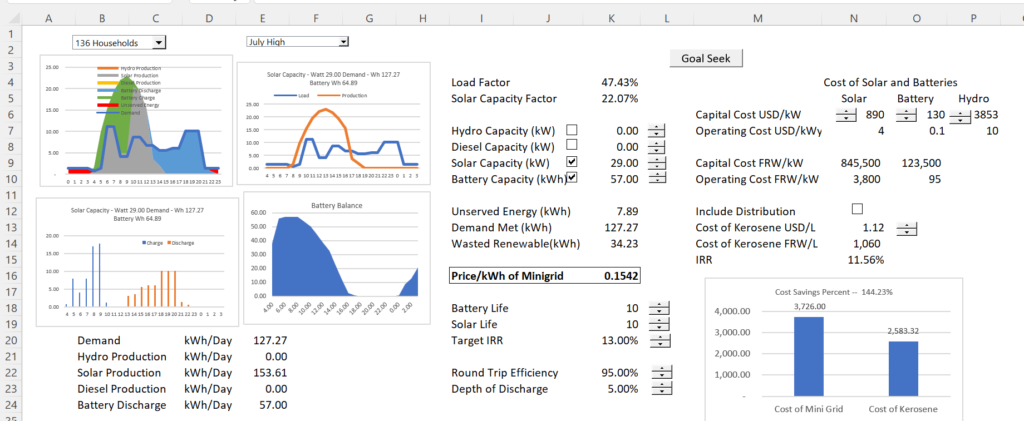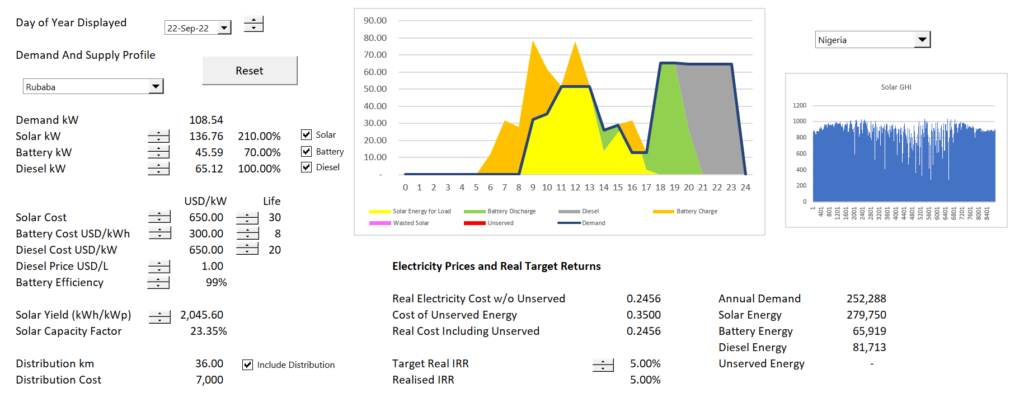This page is the introductory page for mini-grids. Even if you do not model mini-grids directly, the exercise can be valuable from many different perspectives. Some of the issues that arise from mini-grid analysis include:
- Setting-up a battery analysis and computing the costs of storage in an integrated analysis
- Creating a demand driven corporate model with replacement of assets
- Setting-up a supply and demand analysis
- Creating a corporate model with economic depreciation to compute the levelized cost of energy
- All sorts of financial modelling principles
As with other files and analysis, I regularly update the files as I learn more from students and others about various details and procedures. In the case of mini-grids I have now seen more models (some of my collection is available on the google drive that you can get by sending me an email to edwardbodmer@gmail.com). I try and put the more recent files at the top of the page like the one below that includes detailed hourly data, load growth, solar details, components of battery analysis, load shapes, replacement scenarios and other things that you should have if you want to make a reasonable analysis of a mini-grid. I argue that the mini-grid analysis is really a corporate analysis and you must get away from the burecuratic crap of always only thinking about project finance models. This model has a lot of standard modelling techniques and can be applied to a lot of other analyses. Powerpoint slides that describe how the model works and the model itself is attached to the buttons below.
.
.
.
.
.
Mini-Grid Examples and Videos
Example 1: Mini-Grid with Mini-Hydro
The first example of a mini-grid analysis is shown that has four graphs to illustrate the energy demand and supply for a day with the diagram below is shown in the screenshot.

The button below allows you to attach the file.
.
Mini-Grid Model with Mini-Hydro and Diesel and Battery and Solar with Detailed Demand Build-up
.
.
File with an Integrated Corporate Model
The next example is for a case where that includes replacement and and alternative summary graph. This example is illustrated in the screenshot below. This demonstrates that it is a waste of time to worry too much about demand. You could get this from other villages or other similar buildings. It also shows with with a few MIN and MAX functions you can prepare a simple dispatch. The thing that I wasted a lot of time on is the replacement of the batteries and the generating assets.
.
.

.
.
.
.